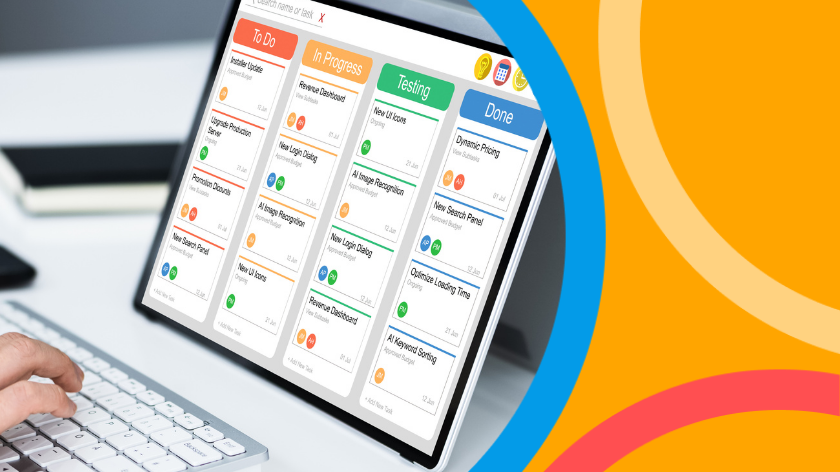There is no question that Asana is one of the best project management solutions on the market today. Asana is dynamic and versatile, making it ideal for organizing, tracking, and managing various team members as they work on important projects.
These traits make Asana extremely user-friendly. However, familiarizing yourself with the tools and functions of this platform can be challenging, especially due to the sheer volume of capabilities that it includes.
With that in mind, we have composed this list of Asana tips and tricks that are designed to help you get the most out of your project management software.
Naming conventions and color coding
Color coding is a simple, but effective practice that has been used for decades. Assigning specific colors to various files, projects, or types of documents allows team members to rapidly identify the information they need.
Naturally, the Asana project management platform includes color-coding capabilities as well. You can mark each project using different colors. This is invaluable when you are juggling multiple tasks simultaneously. As you’re color-coding projects, you can also assign emojis to each task in order to differentiate them further.
In addition to color coding, we also recommend using Asana’s naming conventions feature. Naming files and projects is incredibly easy. However, it is important that you aren’t too vague when assigning titles. For instance, instead of inputting the phrase “whitepaper,” use more specific terminology, such as “Write whitepaper on [topic].”
Typically, anyone can color code or input project names. However, you should consider designating this responsibility to a specific team member. This reduces confusion while also ensuring that all tasks are categorized in a similar manner.
If you want to ensure that everyone is on the same page, you can even write custom guidelines for color coding and naming tasks. Distribute this information to each team member, even if a single person is responsible for naming and color coding projects.
Assign a task to several projects
In some cases, separate projects may be interdependent on one another. As a result, a single uncompleted task may be holding up progress on not one, but two or more projects. Fortunately, there is a way that you can eliminate this barrier to productivity and ensure that your team properly prioritizes their assigned tasks.
In order to accomplish this, simply assign the same task to several projects. This can be done by clicking on the “+” sign located on your project management tab. The “+” sign is usually on the far right of each row. Once you click on the symbol, you will have the ability to assign a task to multiple projects.
Use project templates for recurring processes
One of the biggest sources of wasted time for Asana project managers is recreating new projects for recurring processes. You have probably encountered this headache yourself, which brings us to our next pro tip for getting the most out of Asana.
The Asana platform has a huge library of project templates that can streamline the assignment creation process. These pre-designed templates are formatted with all of the core processes and structures that are necessary for specific types of projects. You can also use templates from projects that you create yourself.
In order to use a template, simply select the “use a template” option on the project creation screen. Next, simply select the template that best aligns with the goals and needs of a particular project. The template feature can save you tons of time so that you can focus on more dynamic tasks.
Use the chrome extensions for Asana
Did you know that Asana has a Chrome extension? The Asana Chrome extension is one of the best-kept secrets about this innovative project management platform.
Once you have downloaded the Asana extension to your Google Chrome browser, you can save web pages as tasks. The extension will automatically transfer site information, such as the URL, to Asana.
This is a simple, but effective way to save time, as you will no longer have to copy and paste links into the project management platform.
Connect Asana with other tools
The true beauty of using the Asana project management platform is its ability to integrate with other software. Integrations are connections between various programs that allow the two pieces of software to freely exchange information.
Asana can be integrated with a wide array of popular productivity tools, which allows your team to work faster and more efficiently.
A few of the tools that can integrate with Asana include Slack, Microsoft Teams, Dropbox, and Google Drive. By connecting Asana with these other tools, your team can easily keep track of all deadlines, emails, group messages, and other important information from a single platform.
Accelerate your workflow with shortcuts
Despite its intuitive design, navigating all of the various windows and menus in the Asana platform can become tedious. In order to eliminate this wasted time, we suggest familiarizing yourself with all of the built-in shortcuts, which are known as “hotkeys.”
These unique key combinations allow you to instantly jump from one screen to another without having to manually click through multiple menu options.
While there are tons of Asana shortcuts, some of the most common include:
- Tab+Q: Add task
- Tab+N: Add section
- Tab+S: Add subtask
- Tab+D: Add due date
- Tab+ Z: Switch to tasks menu
You can seamlessly navigate the Asana project management platform by mastering these shortcut key combinations. Make sure to share these shortcuts with your team so that they can accelerate their workflow, too.
Master Asana with Pathstream
While the tips above can help you get more out of the Asana platform, when you want to become a master of the program truly, consider seeking an Asana Project Management Certificate.
Obtaining your project management certificate is easier than ever before, thanks to Pathstream. Pathstream is the premier educational content provider for various fields, including project management, digital marketing, and immersive design.
In addition to the Asana certificate, Pathstream offers various programs, including a Tableau Data Analytics Certificate.
Was this helpful?
Thanks! What made it helpful?
How could we improve this post?







